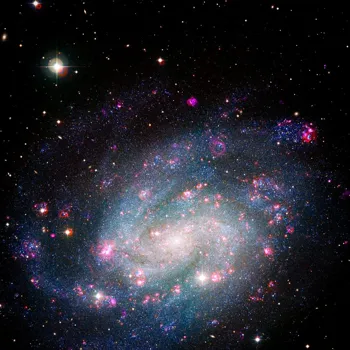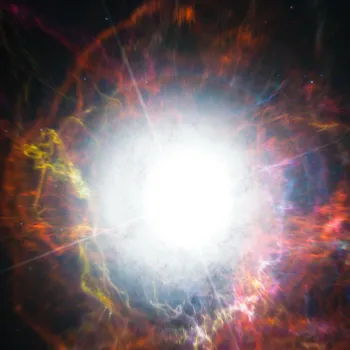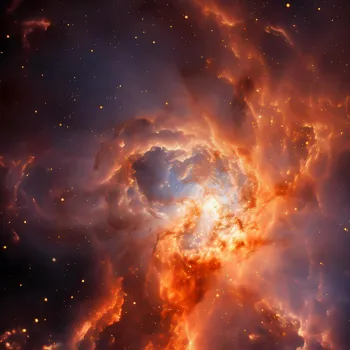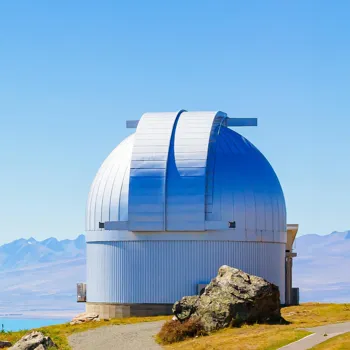Unraveling the Mystery of Cosmic Rays: High-Energy Particles from Space. Dive into the cosmos' hidden secrets!
Cosmic rays. The very name evokes images of star-strewn skies and the vast unknown. But what
exactly are these "rays," and why are scientists so keen on studying them?
Forget rays of light; cosmic rays are actually high-energy particles originating from beyond our solar system, bombarding Earth constantly. Understanding them is like peeling back the layers of the universe, one energetic particle at a time.
Its a window to extreme events that shape the galaxies and even the very building blocks of matter. These particles, mostly protons and atomic nuclei, carry incredible amounts of energy, far exceeding what we can produce in our most advanced laboratory experiments.
Scientists aim to decode their origins and the secrets encrypted within them.
High-energy cosmic rays create air showers, revealing secrets of the universe
Imagine raindrops during a monsoon, but instead of water, it is particles carrying energy found nowhere else. When these high-energy cosmic rays interact with the Earth's atmosphere, they create a cascade of secondary particles, resulting in what's known as an "air shower.

" Scientists use detectors spread across vast areas to capture these showers, piecing together information about the original cosmic ray particle. The study of cosmic rays isn't just about astronomy; it's touching on fields like particle physics, astrophysics, and even climate science.
The journey of cosmic rays from their sources to Earth is a story etched in magnetic fields, gravitational whirlpools, and the very fabric of spacetime. Understanding their journey helps scientists map the hidden structures of the galaxy and beyond.
Scientists seek cosmic ray origins from sources like supernovae and active galactic nuclei
The origin of cosmic rays has puzzled scientists for over a century. While some lower-energy cosmic rays are believed to originate from our sun, the sources of the ultra-high-energy particles remain a mystery.

Supernova explosions, the cataclysmic deaths of massive stars, are considered potential candidates, acting as particle accelerators on a cosmic scale. Active galactic nuclei (AGN), powered by supermassive black holes at the centers of galaxies, are another possibility.
These objects spew out enormous amounts of energy, potentially launching particles across intergalactic distances. However, discerning the precise sources and mechanisms behind these high-energy cosmic rays requires innovative detection techniques.
Largest cosmic ray observatory studies particles with various detectors worldwide
The largest cosmic ray observatory is the Pierre Auger Observatory in Argentina, spread over 3,000 square kilometers. It uses a combination of detectors, like ground-based water Cherenkov detectors and fluorescence telescopes, to capture air showers from different angles.
Other experiments, like the IceCube Neutrino Observatory at the South Pole, are looking for accompanying neutrinos, elusive particles that might be produced alongside cosmic rays in extreme astrophysical environments.
Space-based observatories, such as the Alpha Magnetic Spectrometer (AMS) on the International Space Station, directly measure the composition and energy of cosmic rays before they interact with the Earth's atmosphere. Each tool contributes to our incomplete but evolving grasp.
Study of cosmic rays reveals universe's secrets, impacts on space tech
The study of cosmic rays has advanced our understanding of the universe. The study of the composition of cosmic rays reveals details about the materials available elsewhere in the galaxy. This information aids in studies of element generation and the distribution of elements.

Such studies reveal the secrets of extreme events that shape our universe. Also, studying cosmic rays also helps us understand the effects of cosmic radiation on satellites, spacecraft, and even astronauts in space.
The data helps in mitigating these effects in order to create safer environments and tools for cosmic exploration.
Cosmic ray research in India: rich history and ongoing contributions
Cosmic ray research in India has a rich history, with pioneering work done at institutions like the Tata Institute of Fundamental Research (TIFR) in Mumbai.

Indian scientists have made significant contributions to the development of cosmic ray detectors, data analysis techniques, and theoretical models. Ongoing research includes studies of cosmic ray composition, energy spectra, and anisotropy (directional dependence).
Indian scientists collaborate with international teams on projects such as the Pierre Auger Observatory and the GRAPES-3 experiment, a high-altitude cosmic ray observatory in Ooty. It will be fascinating to see what further revelations these intrepid explorers uncover as the area proceeds.















